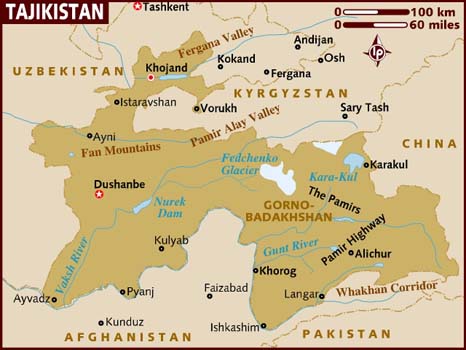October 18, 2012
Tamerlane was a man of many talents. When he wasn’t conquering foreign lands and stacking the skulls of his enemies into massive pyramids, he was building his beloved Samarkand into an epicenter of architecture and culture. He did this by sparing the lives of artisans, engineers, musicians, poets, and scholars who lived in the cities conquered by his armies and bringing them to Samarkand. And so these men from Iran, Iraq, India, the Caucasus, and Central Asia built Samarkand according to his wishes.
Our first visit of the day was to Bibi-Khanym Mosque. Completed in 1404, several years after his conquest of Delhi, the mosque was built with Indian stone transported overland by captured Indian elephants. The mosque fell into disrepair over the centuries and what we see now is mostly a modern reconstruction. Despite this, it is still impressive.




Stand for the Koran



I wonder how this kid broke his arm?

Well that explains everything.



Schoolchildren, a dude with cattle, the usual.
Then we went to the Registan, which is basically the most famous part of Samarkand. The Registan is to Samarkand as Red Square is to Moscow as the National Mall is to Washington, D.C. You get the idea. The Registan is a public square framed by three madrasahs (Islamic schools) where, centuries ago, the residents of Samarkand would gather to listen to royal proclamations or watch public executions.

(this was actually taken the evening before)



The Sher-Dor (Having Tigers) Madrasah, built 1619–1636


Love this

“As-salamu alaykum.” (Peace be upon you)


So beautiful



Ulugh Beg Madrasah built 1417–1420 during the reign of Tamerlane and named after Tamerlane’s grandson. Ulugh Beg was a well-known astronomer and mathematician.



We had an opportunity to visit with a master musician who also builds Uzbek musical instruments. This was the entrance to his shop.



We then went to Ulugh Beg’s Observatory.

Newlyweds everywhere


Completed in 1429 and later destroyed by religious fanatics in 1449, the observatory was rediscovered in 1908 by an archaeologist. The above is giant sextant.


In the afternoon we visited the Shah-i-Zinda necropolis, which was by far my favorite place in Samarkand. While the Registan was imposing, Shah-i-Zinda felt intimate. “Shah-i-Zinda” translates to “The Living King” in Persian, so called because Kusam ibn Abbas, the cousin of prophet Muhammad is supposedly buried here. The earliest structures here are from the 11-12th centuries, with the rest of the complex dating from the 14-15th centuries.




When I die I’d like to be entombed in something simple like this, OK?



And for our last visit of the day, we stopped by a nearby silk carpet workshop where we learned all about the process of making these beautiful carpets by hand. The dyes used here are all natural, coming from plants and insects. The young women who work here undergo a four month training program after which they can stay on as weavers. Weaving a silk carpet can take several months and it appears to be incredibly tedious work, but many of the weavers had iPods to keep them company.


The tools have not changed much over the years.

Dyed silk





So did I come home with one of these beautiful carpets? Unfortunately, no, as they were a bit outside of my price range. Hmm, to pay off the student loans or purchase a silk carpet? The student loans win…for now.
























































































